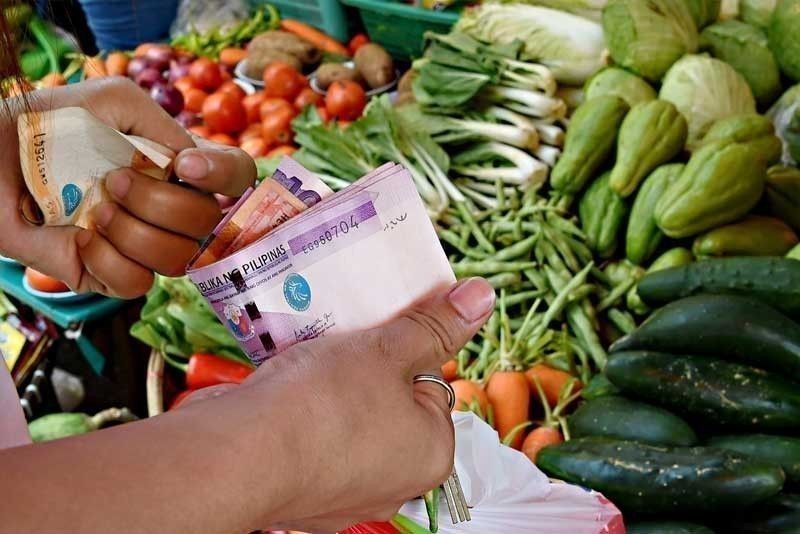Inflation lowest in 6 months

Eases to 2.1% in May
MANILA, Philippines — Prices of basic goods and services rose at their slowest pace in six months last May, weighed down by the falling cost of transportation, food and beverages, and clothing and footwear, the Philippine Statistics Authority (PSA) said yesterday.
The headline inflation rate fell to 2.1 percent in May from 2.2 percent in April and 3.2 percent in May 2019, the PSA report showed. This brings the year-to-date average to 2.5 percent, still within the government’s retained target of two to four percent for 2020 up to 2022.
Declines in the indexes for transportation, food and non-alcoholic beverages, as well as clothing and footwear were seen in May, the second full month of imposition of community quarantines in the country.
The transport index continued to register a decline of 5.6 percent in May as a sharper decline of 28.8 percent was recorded in the prices of petroleum and fuels for personal transport equipment.
Prices of food and non-alcoholic beverages also grew at a slower pace of 2.9 percent in May from 3.4 percent in April. Deflation continued to be seen in the prices of staples such as rice, corn and sugar.
Rice prices declined for the 13th consecutive month, contracting by 2.7 percent in May.
Prices of several foodstuff also grew at a slower pace. These include meat, fish, milk, cheese, eggs, fruits and vegetables.
Diminished demand also caused the index of clothing and footwear to grow at a slower pace of 2.4 percent in May from 2.6 percent in April.
Slower growth was also registered in the indexes of furnishing, household equipment and routine maintenance of the house as well as recreation and culture.
PSA head Dennis Mapa said headline inflation can be expected to remain relatively stable as seen in the continued deceleration of growth in the transport index. He noted, though, that the growth in food prices should be kept in check.
“I think because of the reduction in the transport index, we will be seeing inflation at this level,” he said.
“Of course there are also some increases although slower particularly for fish, vegetables and fruits. So there is still sort of a trend coming from the food group and non-alcoholic beverages index.”
Acting Socioeconomic Planning Secretary Karl Chua said the implementation of the rice tariffication law as well as government’s efforts to ease bottlenecks in the supply chain of essential goods during the implementation of the ECQ also helped.
The compliance of businesses to price freeze for essential goods also kept prices stable, he added.
“Producers worked hard to supply goods continuously despite initial challenges, businesses supported the price freeze order, and consumers cooperated and purchased only what they needed. This is the kind of whole-nation-approach that will help the country recover faster,” Chua said.
Meanwhile, the Bangko Sentral ng Pilipinas (BSP) said inflation would likely ease further, falling below two percent in the third and fourth quarters of the year amid the collapse in oil prices as well as the recession caused by economic fallout due to the global coronavirus pandemic.
BSP Governor Benjamin Diokno said in his virtual press briefing that inflation is likely to ease further to 2.2 percent this year before picking up to 2.5 percent next year, lower than the midpoint of the central bank’s two to four percent target.
Diokno added that the latest number is consistent with the central bank’s prevailing assessment that inflation is expected to remain benign over the policy horizon due largely to the adverse impact of the COVID-19 pandemic on the domestic and global economy.
“The domestic economy is projected to follow a U-shaped recovery path. The Philippine economy is expected to bounce back to its potential output growth in 2021 once the impact of the government’s fiscal and monetary measures gain traction,” Diokno said.
ING Bank Manila senior economist Nicholas Mapa said inflation’s dip below two percent in the coming months could pave the way for more easing measures by monetary authorities.
“Decelerating inflation and the need to provide additional stimulus to an economy headed for a recession sets up a possible BSP rate cut at the June 25 meeting as unemployment data surged to 17.7 percent,” Mapa said. Lawrence Agcaoili
- Latest
- Trending






























